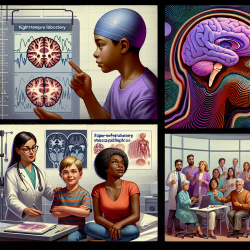Understanding Demographic Change and Its Impact on Therapy Practices
As a practitioner in speech-language pathology, understanding the societal changes around us is crucial for adapting our approaches and ensuring we deliver the best outcomes for children. The research article "Demographic Change and Assimilation in the Early 21st-Century United States" by Richard Alba and Christopher Maggio provides valuable insights into how demographic dynamics and assimilation processes are shaping American society. By integrating these findings into our practice, we can better address the diverse needs of the children we serve.
The Power of Assimilation and Minority Mobility
The research highlights the significance of assimilation as a process that fosters minority mobility and integration into mainstream society. It emphasizes that the increasing diversity in the workforce and intermarriage rates are indicators of ongoing assimilation. This understanding can be transformative for practitioners, as it encourages us to consider the broader social context in which our clients live.
Assimilation is not just about blending into the majority culture; it involves the decline of ethnoracial distinctions, allowing for greater social mobility and interaction across group boundaries. For practitioners, this means recognizing the unique cultural backgrounds of children and using this knowledge to tailor therapy approaches that respect and incorporate their heritage.
Implications for Speech-Language Pathology
Incorporating the concept of assimilation into therapy practices can lead to more effective interventions. Here are some practical steps practitioners can take:
- Cultural Competence: Develop a deep understanding of the cultural backgrounds of the children you work with. This includes recognizing the influence of mixed minority-White backgrounds and how these can impact language development and communication styles.
- Family Engagement: Encourage family involvement in the therapy process. Families from mixed backgrounds can provide valuable insights into the child's cultural context, which can enhance therapy outcomes.
- Flexible Approaches: Be open to adapting therapy methods to align with the cultural and social contexts of the children. This flexibility can help in building trust and rapport, which are essential for successful therapy.
Encouraging Further Research
The findings from Alba and Maggio's research underscore the importance of ongoing research in understanding demographic changes and their implications for therapy practices. Practitioners are encouraged to engage with current research and contribute to the body of knowledge by sharing their experiences and insights.
By staying informed about demographic trends and their impact on society, practitioners can continue to refine their approaches and ensure they are providing the best possible care for their clients.
Conclusion
Demographic changes and assimilation processes offer valuable opportunities for practitioners to enhance their skills and improve therapy outcomes. By embracing these changes and integrating them into our practice, we can better serve the diverse needs of the children we work with. To read the original research paper, please follow this link: Demographic change and assimilation in the early 21st-century United States.










